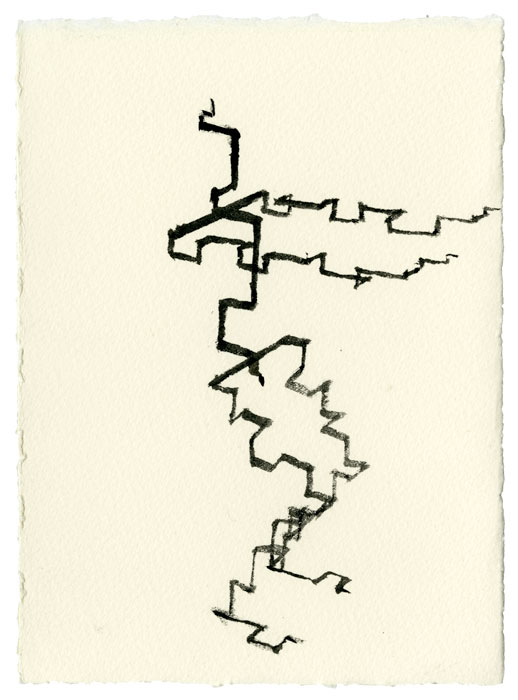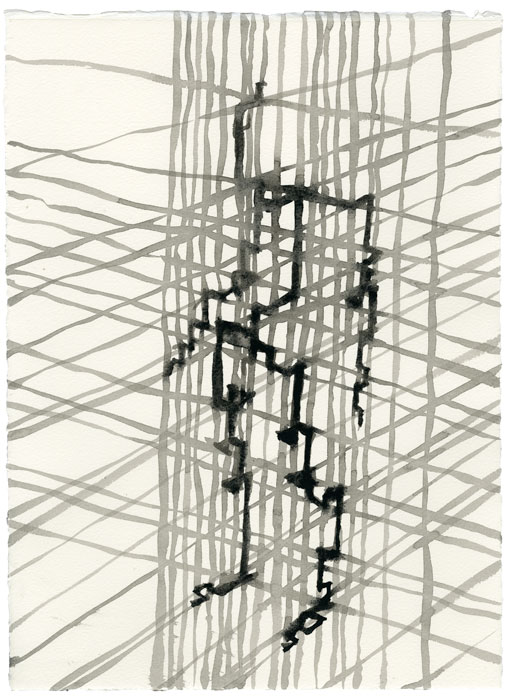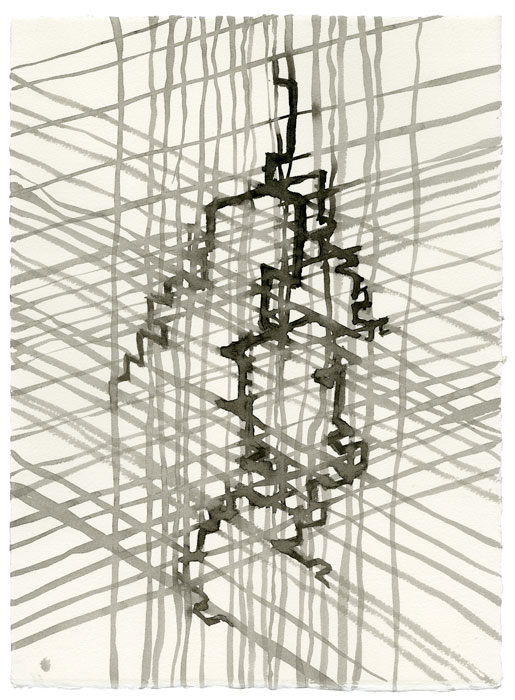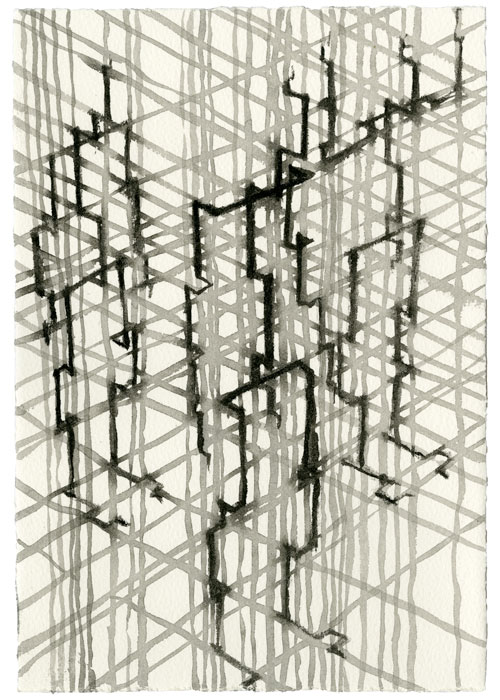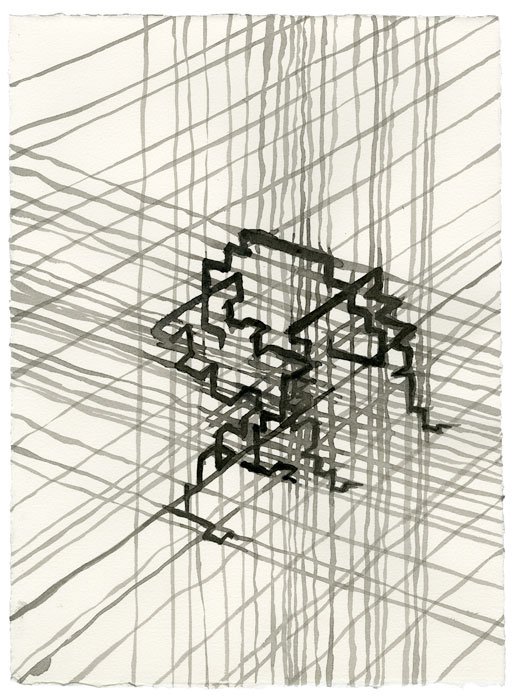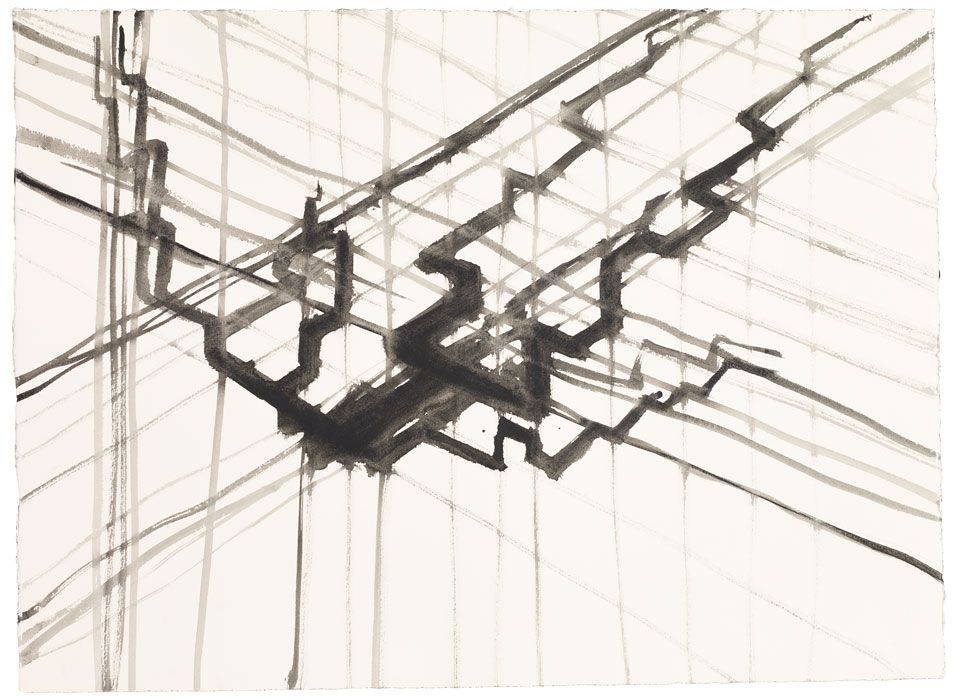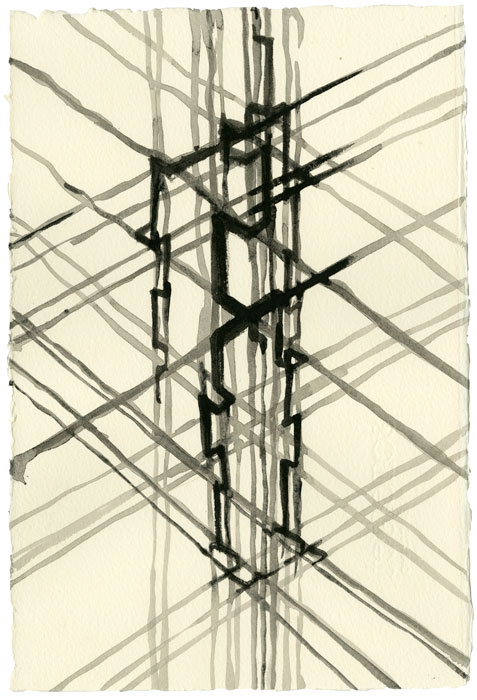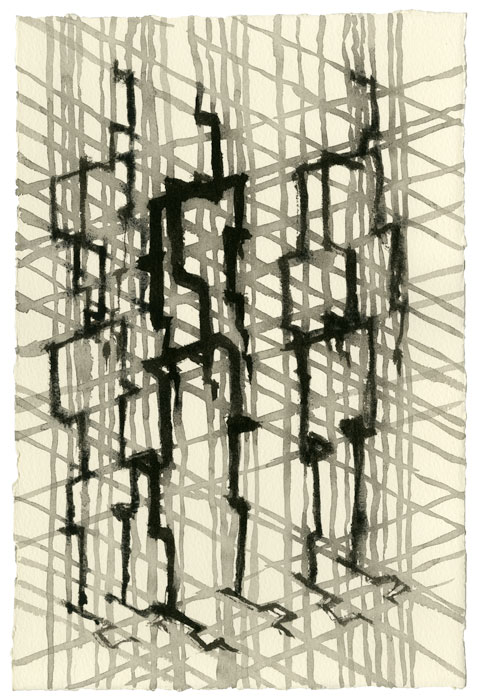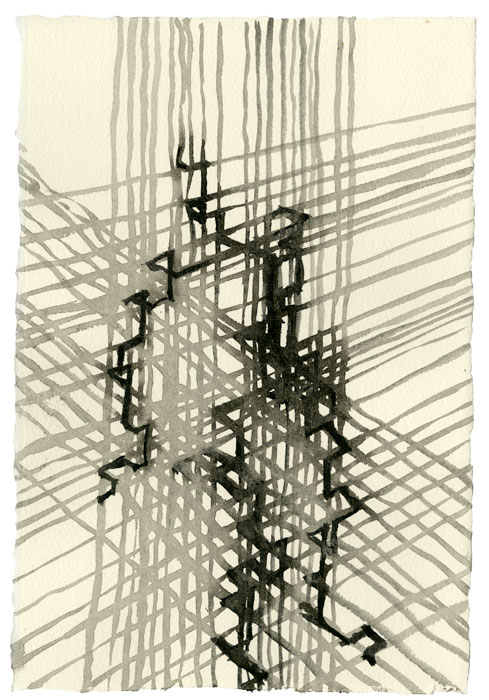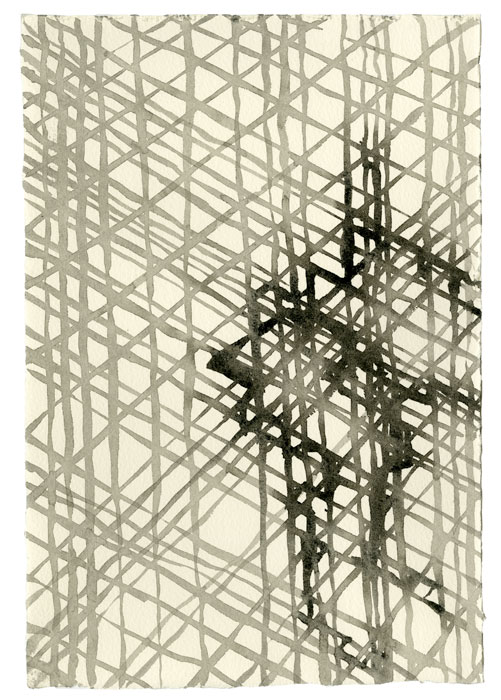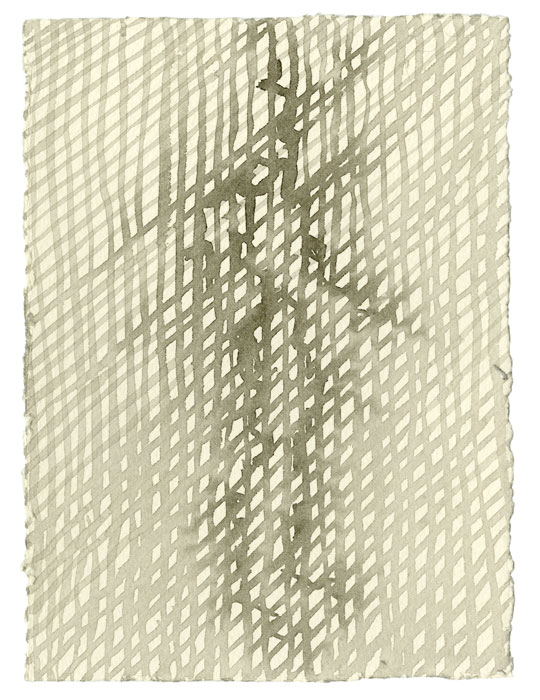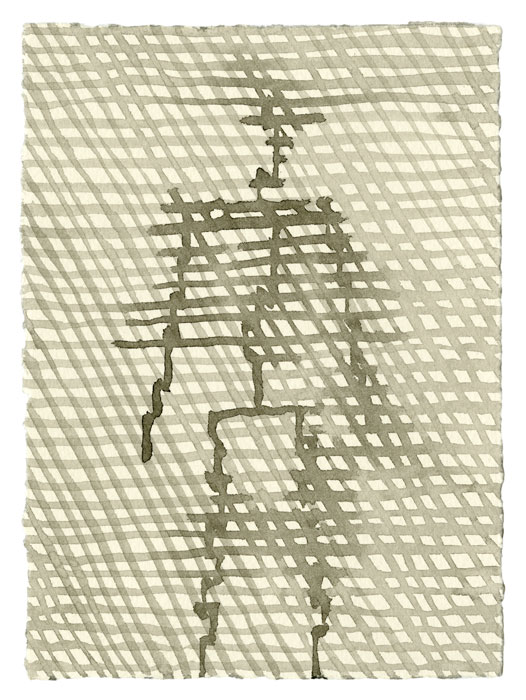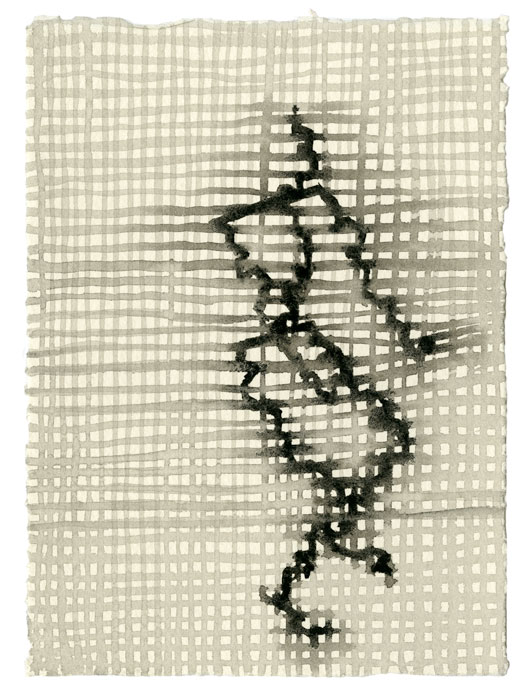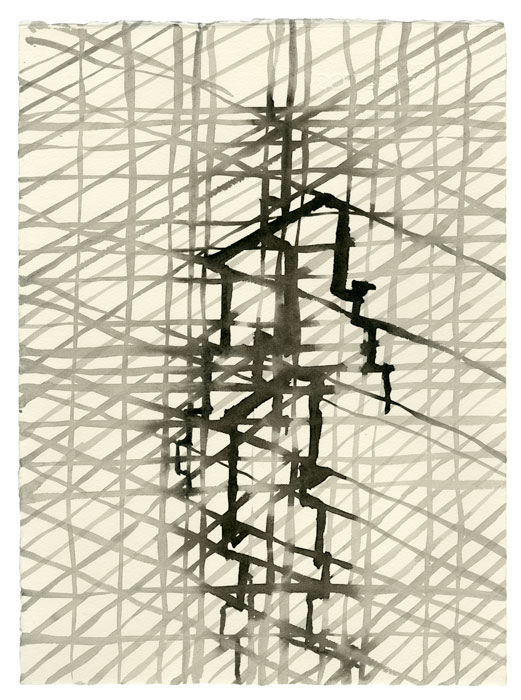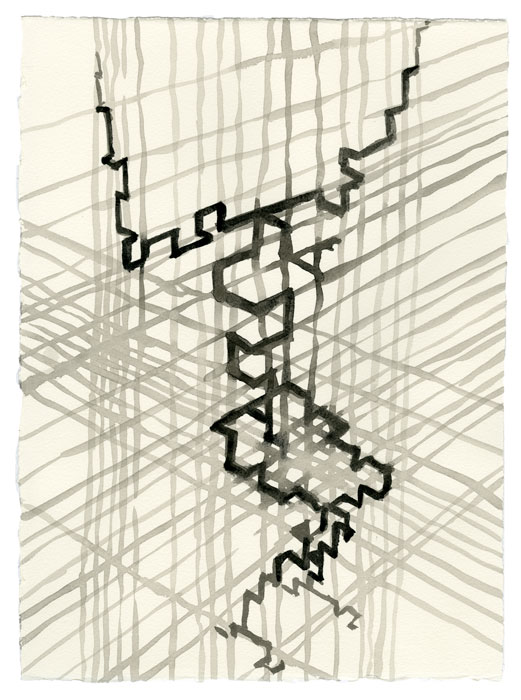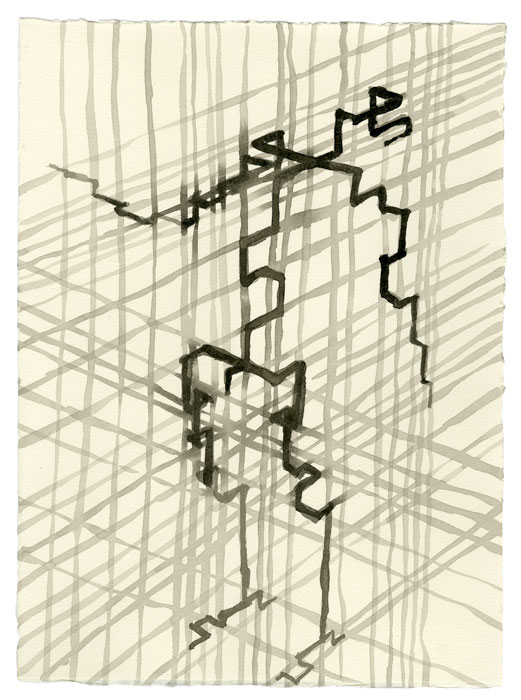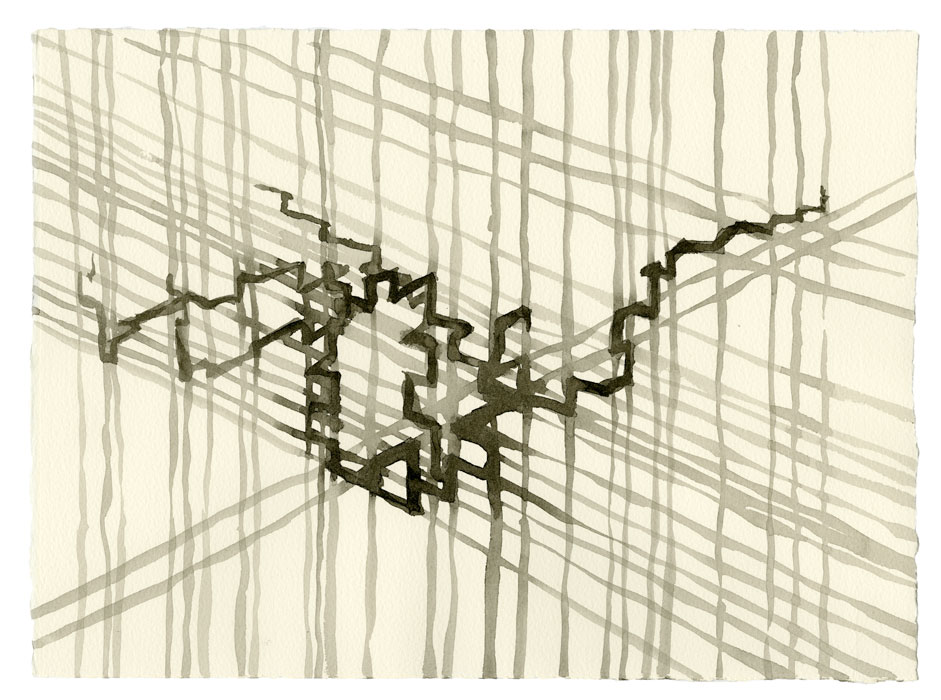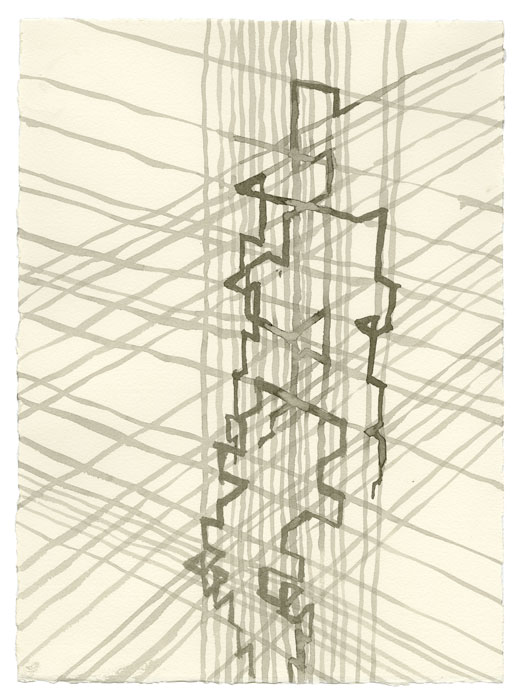'Most of the figures in the ROOTER drawings are caught within grids of lines that, from every direction, cut across and through them. These bodies are both light and solid, using the milk-based casein with soft brushstrokes; limbs and evocations of torso that are much darker than the grid-lines; and with right angles to mark joints. They are studies of metal work. Some of them, however, achieve the ambiguity and fluidity of the human condition in a way that reaches beyond the sculptures. This delicate use of wash on paper is a quiet but powerful evocation of what I see as the core idea of these drawings: we realise, deep in this body of ours, that we are and need to be both rooted and adrift.'
Extract from Hugh Brody, 'Roots / Uprooted', ROOTING THE SYNAPSE, Hong Kong: White Cube, 2018, pp. 20-21.
'AG: These are the drawings that will be part of the show. You could say that this axonometric projection is what architects use to give perspectival and objective impressions of a building in space. I do the meridians at the same time as the emergent body and they become part of one another. I am fond of this method because it gives you that sense of balance or loss of balance/dis-equilibrium/equilibrium - the feeling of a body in space that, while being defined by these lineaments, also conveys uncertainty: we don't know whether it is buried in a matrix or liberated from it.
CL: Or whether it has runners and slides back and forth…
AG: There are lots that are more to do with falling. Drawing is very much part of the whole process of discovering. I use drawing to learn the possible extensions...
CL: And then you deliberately work with a brush and ink, so you can't get a straight line? Certain points are dictated by how the medium flows from the tool you are using?
AG: Drawing is always freer and more open than the sculpture. It's an open exploration but these are all quite focussed works.'
Extract from 'Rooting Thinking in the Present Moment: A conversation between Antony Gormley and Catherine Lampert', in ROOTING THE SYNAPSE, White Cube Hong Kong, pp. 60-61

